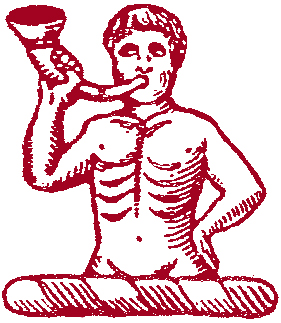Originally of Scottish descent, the Murray’s had a proud military heritage with one of their forefathers fighting alongside Wallace in the late 13th Century.
Having raised a troop of horse to fight against King James Murray first came to prominence at the battle of Clady-ford on 15th April 1689, commanding his cavalry troop with considerable distinction at the battle and retiring only when his unit ran out of ammunition.
Murray led defiance without, and within the Walls
Returning from Clady, entering the City Murray headed for the Council meeting and accused Col. Lundy, the Governor, of treachery.
He left the meeting and directly addressed the townspeople and soldiers urging them to hold out. Murray called for all citizens who were for no surrender to tie white cloth to their arms; which the men of his command wore these for the duration of the Siege.
Traditionally the Murray Club is the only Club to wear white armbands on Parade, marking the distinction of the part Murray played in the saving of the city from surrender.
When Lundy left the City, Murray was offered the governorship but preferred to remain with his soldiers and turned the position down. Murray was appointed General in the field upon all sallies and also commanded the garrison’s cavalry regiment. Adam Murray is regarded as one of the outstanding leaders of the Siege.
The Battle of Pennyburn
On 21st April Murray gave ample evidence of his military skill and bravery. At noon Murray led a force out of the city to attack the Jacobite camp at Pennyburn. In the ensuing fight Maumont was killed, according to a number of sources, by Murray in hand to hand combat.
The Second Battle of Pennyburn
A few days later Murray led another foray on the Jacobite trenches about a mile north of Pennyburn at Elagh. At the end of the battle the Jacobites had suffered the loss of their new commander, General Pusignan.
Murray was clearly identified by the Jacobites as the defender’s outstanding military leader.
Battle of Windmill Hill
Closer to the City, in early May the Jacobites under the command of Brigadier-General Ramsey seized a strategic location on a hill close to the City Walls, a windmill.
The defenders decided to counter-attack immediately. Murray, Mitchelburne and Walker commanded the detachments. In the ensuing heavy fighting the Jacobites were forced out of their positions suffering more than 200 dead, including their commander, Brigadier-General Ramsey.
On the 10th May the new defences were nearly overwhelmed by a surprise attack. Adam Murray watching from the city walls saw what was about to happen and immediately mounted his horse, galloped through Butcher’s Gate, down Bog Street and on to the defenders’ position, warning them of the danger. Murray returned unhurt although he had to pass Jacobite infantry who had taken up position in the hedges.
Murray took the fight to the enemy on the water as well as on land
On the night of 18th June, Murray left the City by boat in charge of the raiding party and headed past what is now Newbuildings and headed for Dunalong, approximately eight miles from the city. The boat was spotted and was fired upon as the men rowed down the river.
As the party headed back to the city, coming once again under fire from the shore, Murray received some shots to his head-piece which indisposed him for a short time
Murray wounded seriously
By July the garrison’s fighting strength was just over 5000 men, but Murray was still determined to take the fight to the enemy.
On 16th July Murray undertook a flank attack on the Jacobite trenches before Butcher’s Gate. During his unit’s withdraw Murray was seriously injured, enough to keep him out of further action for the remainder of the Siege.
Throughout the Siege, up to his wounding, Murray commanded all the horses, and was in all the sallies that were frequent and successful.
Honouring a Siege Hero, Remembering Adam Murray
After Murray had recovered from his wounds he continued as an officer with the Williamite army, commanding the militia of the province of Ulster, holding the honour of commanding the first Regiment of Horse that served William in Ireland.
The exact date of Adam Murray’s death is not known. His grave can be found in the old parish graveyard of Glendermott, with the Grave of Mitchelburne close by.
Each year the Murray Club and Mitchelburne Club honour these Siege Heroes by laying wreaths on their Graves and holding a short Commemorative Service.
Click here for a more detailed version of Col. Adam Murray’s central role in the Siege story.
